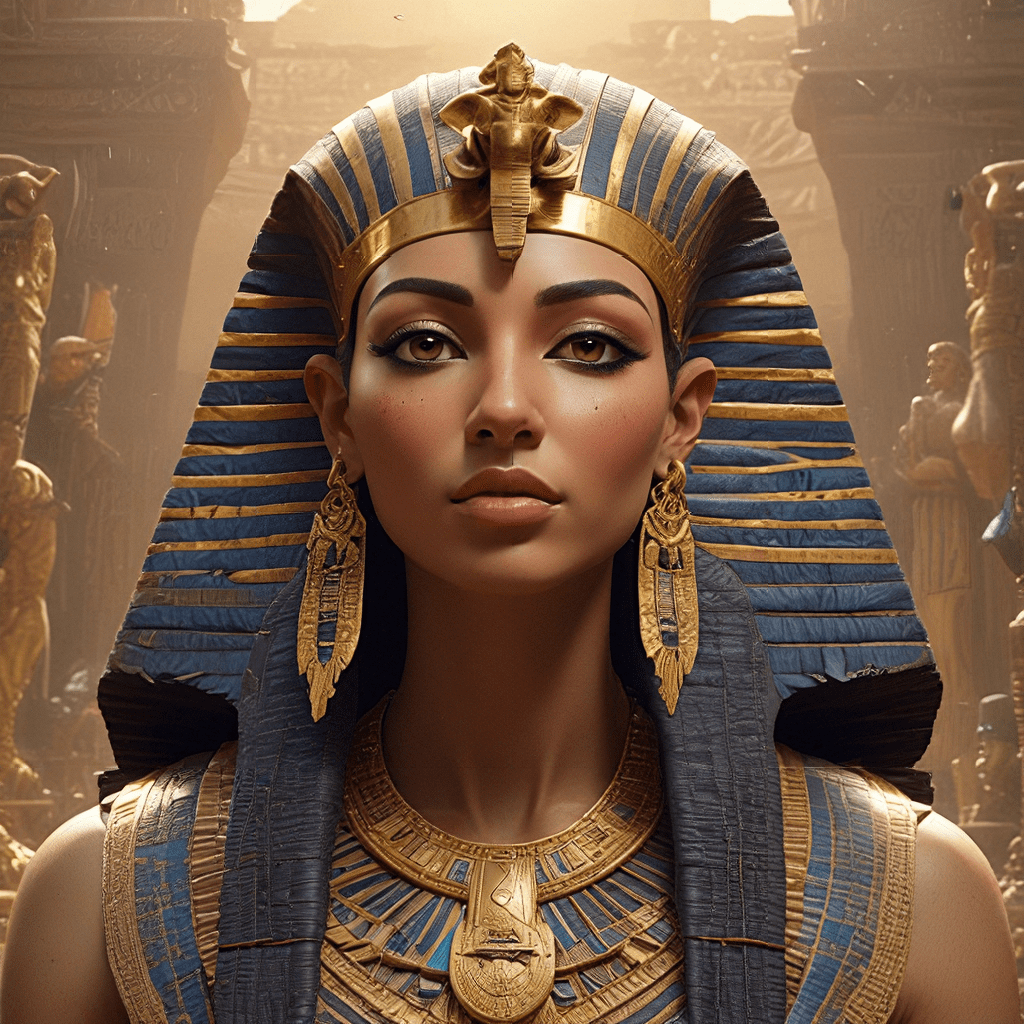Pharaonic Power: Exploring the Rise and Fall of Egyptian Royalty
I. Introduction: The Enigma of Pharaohs
The pharaohs of Ancient Egypt hold a unique place in history. They were more than just kings; they were revered as divine rulers, embodying the very essence of power and authority. Their legacy lives on in the magnificent pyramids, temples, and tombs that dot the Egyptian landscape, fascinating generations with their stories of power, wealth, and mystery.
The word pharaoh originates from the Egyptian phrase “per-aa,” meaning “Great House” or “Big House.” This referred to the royal residence and, by extension, the king himself. By embracing the title of “pharaoh,” these rulers elevated themselves to a god-like status, bridging the gap between humanity and the divine.
II. The Rise of Dynastic Power: From Narmer to the Old Kingdom
The story of pharaonic power begins with the unification of Upper and Lower Egypt. Around 3100 BCE, a powerful king named Narmer, also known as Menes, achieved this crucial feat. He is often credited with establishing the first dynasty and laying the foundation for a centralized state that would last for centuries. Narmer’s legacy is immortalized in the Narmer Palette, a ceremonial slate that depicts him as a triumphant warrior, unifying the two lands under his rule.
The Old Kingdom (c. 2686-2181 BCE) marked a golden age for Egypt. This period saw the construction of the iconic pyramids of Giza, testaments to the pharaohs’ power and wealth. The pharaohs of this era were not only powerful military leaders but also skilled administrators who established a complex system of government and bureaucracy. They oversaw the construction of elaborate irrigation systems, temples, and tombs, leaving behind a breathtaking legacy of architectural marvels.
III. The Middle Kingdom: Renewal and Instability
After the decline of the Old Kingdom, Egypt entered a period of instability known as the First Intermediate Period (c. 2181-2055 BCE). The country fragmented into smaller kingdoms, each vying for power. This period of chaos and unrest ended with the rise of the Middle Kingdom (c. 2055-1650 BCE).
The pharaohs of the Middle Kingdom restored order, reunited Egypt, and embarked on a new era of prosperity. They prioritized a focus on artistic and cultural development, evidenced by the remarkable tombs and temples they built. This period saw a flourishing of literature, craftsmanship, and innovation, restoring Egypt to its former glory.
IV. The New Kingdom: Egypt at its Zenith
The New Kingdom (c. 1550-1069 BCE) marked the peak of Egyptian power and influence. This era was defined by strong, ambitious pharaohs who expanded Egyptian territory and established a global empire. Thutmose III, known as the “Napoleon of Egypt,” led numerous military campaigns, conquering vast swathes of territory in Nubia, Syria, and the Levant. Ramses II, the “Great,” also left an indelible mark on history with his impressive military victories and architectural achievements. He built numerous temples, including the magnificent Abu Simbel, and signed a peace treaty with the Hittites, a formidable rival power.
Beyond military conquests, the New Kingdom witnessed religious innovation. Akhenaten, a pharaoh known for his radical religious reforms, introduced a monotheistic religion centered on the sun god Aten. His reign, though short-lived, had a profound impact on Egyptian society, challenging traditional religious beliefs and sparking controversy.
V. The Late Period: Decline and External Threats
The Late Period (c. 664-332 BCE) saw a gradual decline in pharaonic authority. Internal strife, the growing influence of foreign powers, and economic instability weakened the once-mighty empire. Egypt became vulnerable to external threats from powerful neighbors like Nubia and Assyria.
The Nubian kingdom to the south posed a significant challenge, eventually conquering Egypt and establishing their own dynasty. The Assyrians, a formidable military force from Mesopotamia, also conquered Egypt in the 7th century BCE, marking a significant blow to Egyptian independence. This period of instability and foreign rule brought an end to the long reign of the pharaohs and ushered in a new era for Egypt.
VI. The Ptolemaic Dynasty: The Last Pharaohs
After the conquest by Persia, Egypt was ruled by a series of foreign powers until Alexander the Great’s arrival in 332 BCE. Upon Alexander’s death, his general Ptolemy I Soter established the Ptolemaic Dynasty, a Greek dynasty that ruled Egypt for over 300 years. The Ptolemaic pharaohs were renowned for their lavish lifestyles, patronage of the arts, and the fusion of Egyptian and Greek traditions.
The most famous of the Ptolemaic pharaohs was Cleopatra VII, the last pharaoh of Egypt. She was a powerful ruler known for her intelligence, charm, and political acumen. Cleopatra’s reign was marked by alliances with Roman generals like Julius Caesar and Mark Antony, but ultimately, she was defeated by the Roman Empire and Egypt lost its independence.
VII. The Pharaohs and Religion: The Divine King and his Role in Egyptian Mythology
The pharaohs of Ancient Egypt were not merely earthly rulers; they were considered divine kings, chosen by the gods to rule over the land. Their role went beyond administering the affairs of the state; they were also responsible for maintaining cosmic order and ensuring the well-being of the people.
According to Egyptian mythology, the pharaoh was the embodiment of Horus, the god-king who had defeated the evil Seth to claim the throne of Egypt. This connection to the divine reinforced the pharaoh’s authority and legitimized his rule. The pharaoh was believed to have a direct link to the gods, serving as their intermediary on Earth. They were considered the living embodiment of Ra, the sun god, responsible for bringing light and life to the land.
The pharaoh’s divine status was reflected in the elaborate rituals and ceremonies performed in their honor. In addition, they were often depicted in art and literature as divine beings, showcasing their connection to the gods and the power they wielded.




